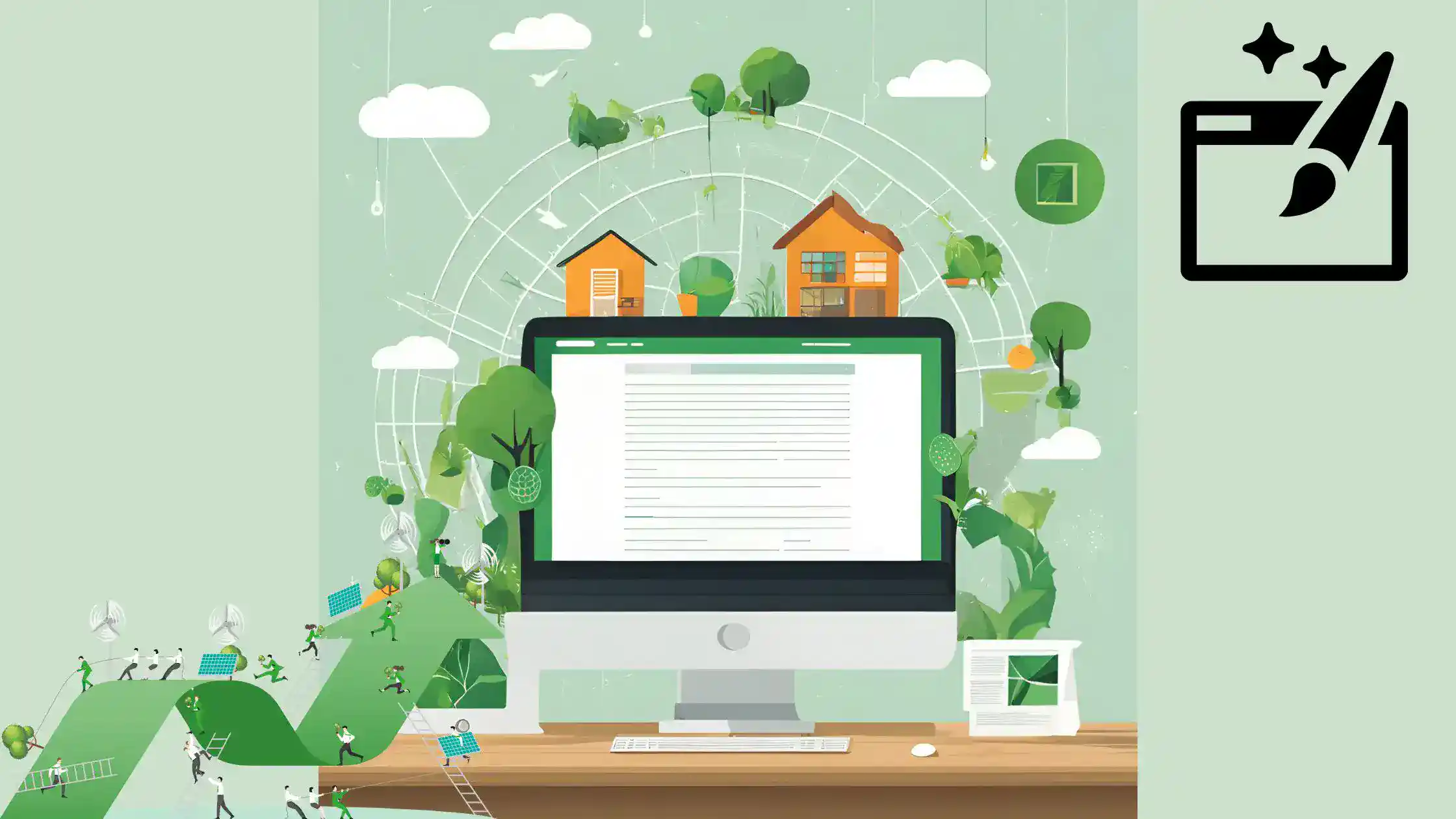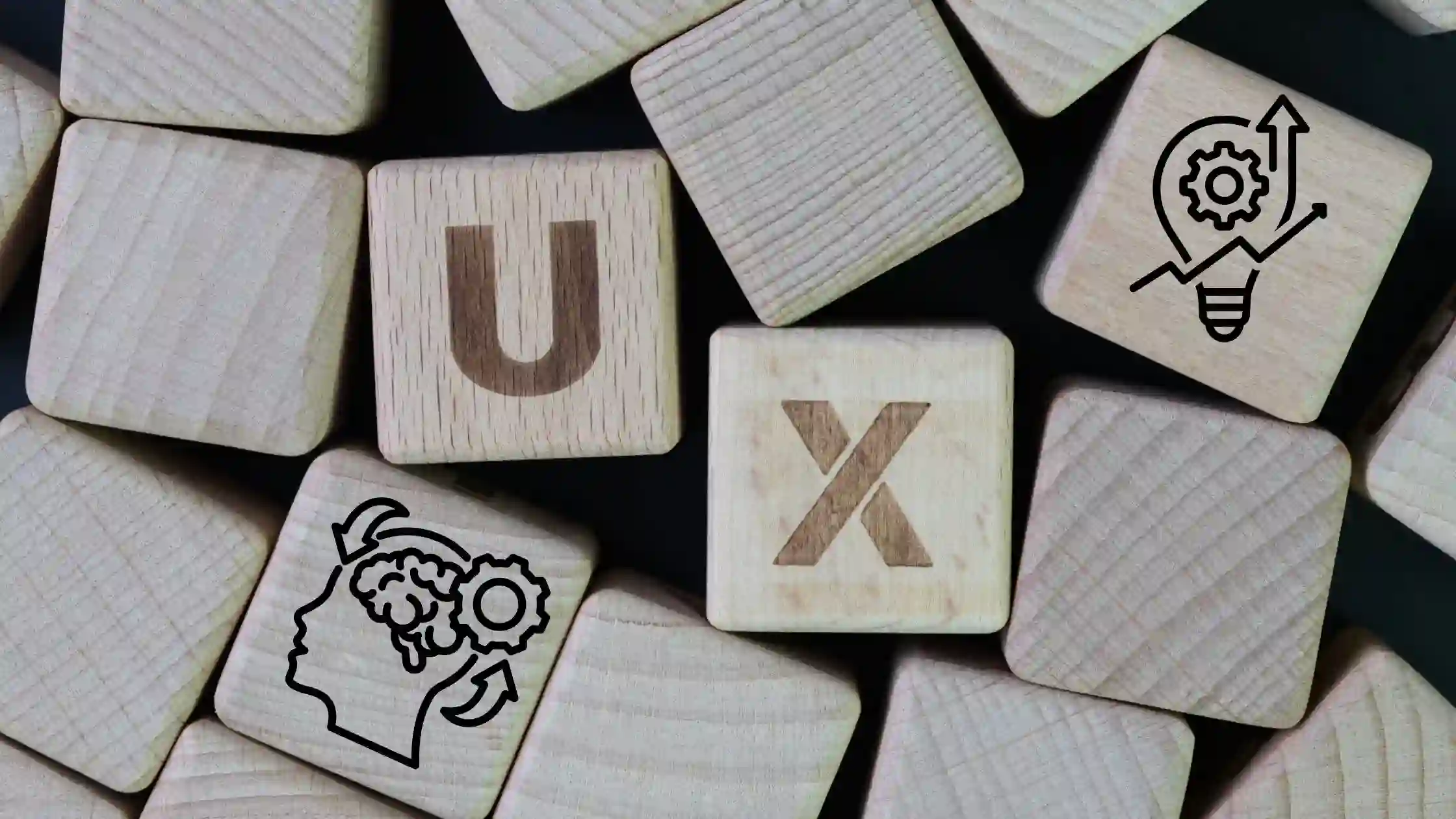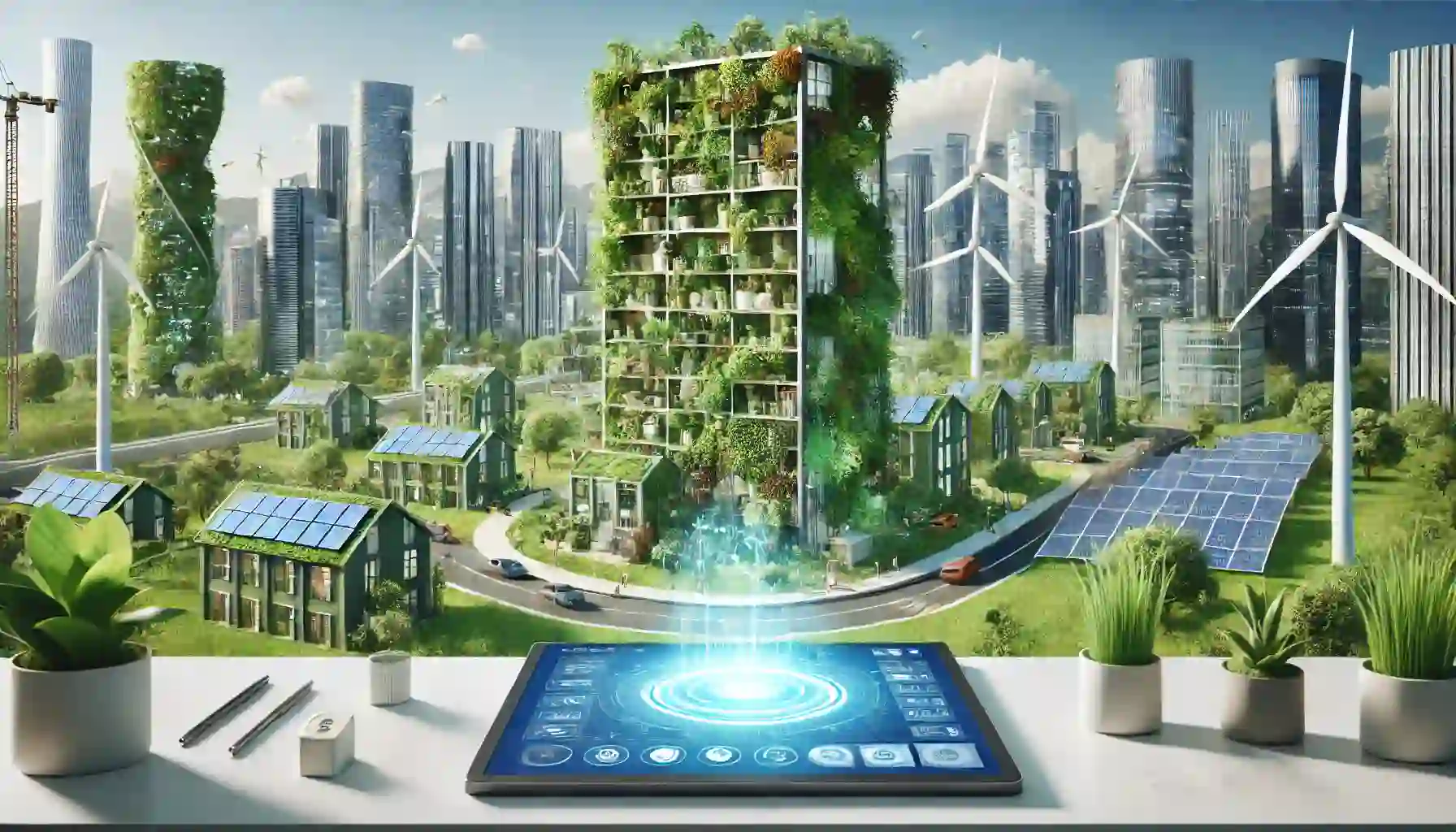Introduction
Sustainable web design is gaining momentum as businesses and designers recognize the importance of creating eco-friendly digital experiences. This guide explores the latest trends in sustainable web design within the broader field of digital design, offering insights and practical tips for creating websites that are not only visually appealing but also environmentally responsible.
Table of Contents
Understanding Sustainable Web Design
Sustainable web design creates websites that minimize environmental impact through efficient design, development, and hosting practices. It focuses on reducing energy consumption, optimizing performance, and using eco-friendly resources throughout the website’s lifecycle. For more insights on building effective and sustainable websites, check out our latest post: HubSpot Website Builder: Your Ultimate Tool for Effective Web Building.

Importance of Eco-Friendly Digital Design
Web design has a significant environmental impact, from the energy consumed by data centers to the carbon footprint of devices accessing websites. By adopting sustainable practices, designers can help reduce this impact and contribute to a healthier planet.
Trends in Sustainable Web Design
Latest Innovations and Practices
Sustainable web design is evolving with innovative practices to reduce energy consumption and improve efficiency. Trends include minimalist design, optimized performance, green hosting, and the use of renewable energy.

Minimalist Design Approach
Benefits of Minimalism in Web Design
Minimalist design focuses on simplicity and functionality, which can significantly reduce the energy required to load and operate a website. By eliminating unnecessary elements, designers can create faster, more efficient websites. Learn more in Minimalist Web Design: Why Less is More.
Optimizing Website Performance
Techniques for Speed and Efficiency
Optimizing website performance involves techniques such as image compression, efficient coding practices, and leveraging browser caching. These methods not only enhance user experience but also reduce energy consumption.

Energy-Efficient Hosting Solutions
Green Hosting Providers
Choosing energy-efficient hosting solutions is crucial for sustainable web design. Green hosting providers use renewable energy sources and implement energy-saving practices in their data centers, significantly reducing the carbon footprint of hosted websites. Find out more at Top Green Web Hosting Providers.
Reducing Carbon Footprint
Strategies to Lower Digital Carbon Emissions
Reducing a website’s carbon footprint involves several strategies, including minimizing server requests, optimizing images, using green hosting, and encouraging users to access the site through energy-efficient devices.

Sustainable Design Tools and Resources
Software and Tools for Eco-Friendly Design
There are numerous tools and resources available to help designers create sustainable websites. These include image optimization software, efficient coding frameworks, and sustainability-focused analytics tools.
Case Studies of Successful Sustainable Websites
Real-World Examples
Examining successful sustainable websites provides valuable insights into best practices and effective strategies. Case studies demonstrate how companies have implemented eco-friendly designs while maintaining functionality and aesthetic appeal.

Accessibility and Sustainability
Inclusive and Green Design
Accessibility and sustainability often go hand in hand. Designing websites accessible to all users, including those with disabilities, improves user experience and enhances the overall sustainability of the digital space.
User Experience and Sustainability
Enhancing UX with Sustainability in Mind
Sustainable web design should not compromise user experience. Designers can create engaging, efficient, eco-friendly websites by integrating sustainable practices with a user-centered approach. To delve deeper into the UX design process and stay ahead in 2024, read our comprehensive guide: Unlocking Success in UX Design Process: Everything You Need to Know 2024.

Sustainable Content Strategy
Creating Green Content
A sustainable content strategy involves creating and managing content in ways that reduce environmental impact. This includes using efficient media formats, optimizing content delivery, and maintaining a minimal digital footprint.
Renewable Energy and Web Hosting
How to Choose Renewable Energy-Powered Hosts
Selecting web hosts that use renewable energy sources is a key aspect of sustainable web design. These hosts often provide transparency about their energy practices and offer certifications to assure their commitment to sustainability.

Life Cycle of a Sustainable Website
From Development to Maintenance
The sustainability of a website spans its entire lifecycle, from initial development to ongoing maintenance. This includes using eco-friendly design practices, regular performance optimization, and sustainable hosting solutions.
The Role of AI in Sustainable Web Design
AI Tools for Eco-Friendly Design
Artificial intelligence can play a significant role in sustainable web design. AI tools can help optimize website performance, automate energy-saving practices, and provide insights into reducing environmental impact.

Educating Clients on Sustainable Design
How to Advocate for Green Practices
Educating clients about the benefits of sustainable web design is crucial. By highlighting the environmental and economic advantages, designers can encourage clients to adopt green practices in their digital projects.
Future of Sustainable Web Design
Predictions and Emerging Trends
The future of sustainable web design is promising, with emerging trends focusing on greater energy efficiency, innovative technologies, and increased awareness of environmental impact within the digital design community.

Common Myths About Sustainable Web Design
Debunking Misconceptions
Several myths surround sustainable web design, such as being too costly or compromising quality. Debunking these misconceptions helps in promoting the adoption of eco-friendly practices.
Conclusion
Sustainable web design is not just a trend but a necessary shift towards creating a more eco-friendly digital world. By embracing sustainable practices, designers can significantly reduce the environmental impact of their work while delivering efficient, engaging, and aesthetically pleasing websites. The journey towards sustainable web design is ongoing, with continuous advancements and innovations paving the way for a greener digital future.
Want to learn more? Check out our next article here!
FAQs
How can I make my website more sustainable?
To make your website more sustainable, focus on optimizing performance, choosing green hosting providers, reducing media size, and using efficient coding practices.
What are some tools for sustainable web design?
Tools for sustainable web design include image optimization software, efficient coding frameworks, sustainability analytics tools, and AI-based performance optimizers.
Why is minimalist design considered sustainable?
Minimalist design is sustainable because it reduces the number of elements on a page, leading to faster load times and lower energy consumption.
How do green hosting providers help in sustainability?
Green hosting providers use renewable energy sources and implement energy-saving practices in their data centers, significantly reducing the carbon footprint of hosted websites.
Can AI help in creating sustainable websites?
Yes, AI can help create sustainable websites by optimizing performance, automating energy-saving practices, and providing insights into reducing environmental impact.
What are the benefits of sustainable web design?
Benefits of sustainable web design include reduced environmental impact, improved website performance, cost savings, and enhanced user experience.